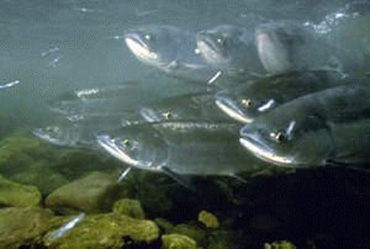Overfishing, coastal development, and many other human activities can decimate fish populations. That’s not only bad for the fish, it’s bad for people, too -- it leaves fewer fish for food and recreation.
One possible solution may be restocking -- adding to the population by introducing fish that were raised in captivity.
 Chum salmon are a fish restocking success in Japan. Credit: National Oceanic and Atmospheric Administration
Chum salmon are a fish restocking success in Japan. Credit: National Oceanic and Atmospheric AdministrationBut it’s tricky; if it’s not done right, it can actually make things worse. The fish reared in captivity might compete with those left in the wild, for example. Or they might bring diseases that could decimate the population, or genetic traits that wouldn’t mix well with those of fish in the wild. And it takes a lot of work to keep an eye on a restocking program to make sure it’s working.
Restocking was fairly common in the coastal waters of the United States from the 1880s to the 1950s. But there was no evidence that any of the efforts were working, so the practice was scaled back.
Since then, marine biologists have been working with the people who manage fisheries to design and monitor better programs. Even so, results have been limited, with more failures than successes.
One of the biggest successes has been with chum salmon in Japan. The fish are cheap to rear in captivity and they have a high survival rate, so restocking has added millions of fish at a reasonable price. And a recent experiment with snook along the coast of Florida also showed promising results -- raising hopes that we can reverse the declines in other fish populations in the decades ahead.

